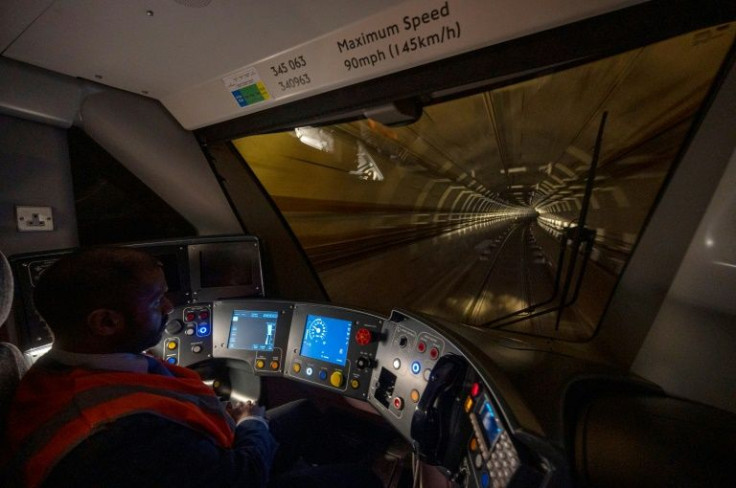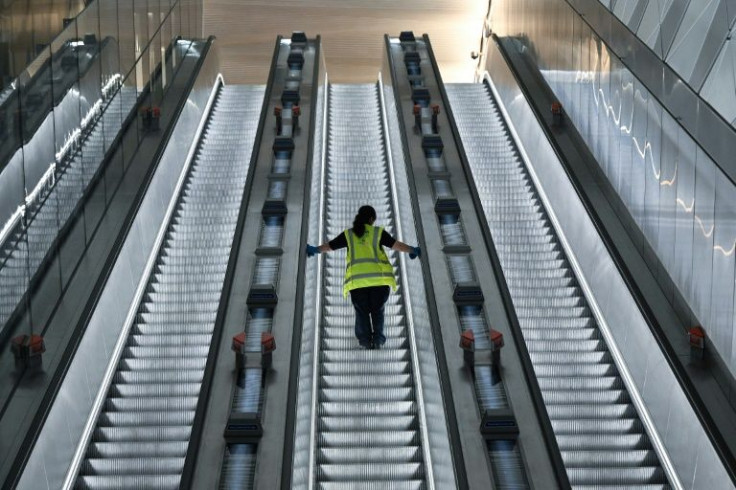London's Long-delayed Commuter Rail Link Opens
Long delayed and over budget, the Elizabeth line rail link finally opened in London on Tuesday, with hopes that the speeded up journey times will provide a much-needed economic boost.
Hundreds of people queued outside Paddington station in west London to be on the first train, which departed to cheers at 6:33 am (0533 GMT).
By 10:00 am, there had been some 130,000 journeys, operator Transport for London (TfL) said.
London Mayor Sadiq Khan was one of those on board, and told AFP that the line was a "game-changer for our country and our city".

Khan's predecessor as mayor, Prime Minister Boris Johnson, said the project is forecast to boost the UK economy by ?42 billion ($52 billion, 49 billion euros).
Only one of the line's three branches has opened so far, from Paddington to Abbey Wood in southeast London.
There, commuters wanted to reap the benefits of the new line from a sprawling hinterland ill-served with fast transport links.
"I'm excited just to see how quick it actually is," said Niyana Saratatt, 45, who works in central London.

"At the moment I need to take a train, a bus and a Tube. This will cut my journey in half. Everyone's happy," she added, predicting a rise in local house prices.
David, in his 60s, was on one of the first trains arriving at Abbey Wood having returned from his night shift as a security guard in Farringdon, central London.

"It's a big change, it saves me 50 percent of my time. I was very eager to get it," he said. "It's going to increase activities, socialising, friends coming to visit you."
The usual bleary-eyed rush hour was replaced -- for one day at least -- by wide-eyed excitement, as commuters and hordes of train enthusiasts packed the early services.
"I've been interested in the Tube for a long time," said software developer Kirk Northrop, 37.
"Something like this, that's been 35 years in the planning and 15 years in the making, it's nice to finally see it come to realisation.

"It's not often you can celebrate a massive engineering feat."
Commuters snapped on their camera phones inside the vast new stations, marked by curving walls and spacious ticket halls.
"It's a great moment for the city, very exciting," said Italian student Salvatore Ingenito, 20, who got up at 5:00 am to see the first train depart.
"Paddington is absolutely ravishing."
Disability rights campaigner Brendan Taylor, 18, said the stations' step-free access would also be a "game changer" for those, like himself, in wheelchairs.
"Say I wanted to go from Paddington to Westminster, because the Tube is so inaccessible... it would take me about an hour and a half," he explained.
"When Bond Street opens it will take me about 15 minutes."
Sections from Shenfield, east of London to Liverpool Street and Heathrow Airport and Reading, west of the capital, to Paddington will open by May next year.
Trains are currently scheduled to run from 6:30 am to 11:00 pm Monday to Saturday, with a Sunday service expected to start later this year.
The line, named after Queen Elizabeth II, is projected to carry up to 200 million passengers a year, adding 10 percent more capacity to London's transport network.
"It's not just fit for Her Majesty the Queen, it's fit for Londoners, fit for Brits, fit for tourists," mayor Khan told reporters.
Work started on the project back in 2009 and was initially called Crossrail. It was originally due to open in 2018.
But it was hit by problems with construction and complex signalling systems. Costs ballooned to ?18.9 billion -- some ?3 billion over budget.
"Bringing the railway together, integrating all the complicated systems was always going to be a challenge. It was a challenge," said Elizabeth Line director Howard Smith.
© Copyright AFP 2024. All rights reserved.





















